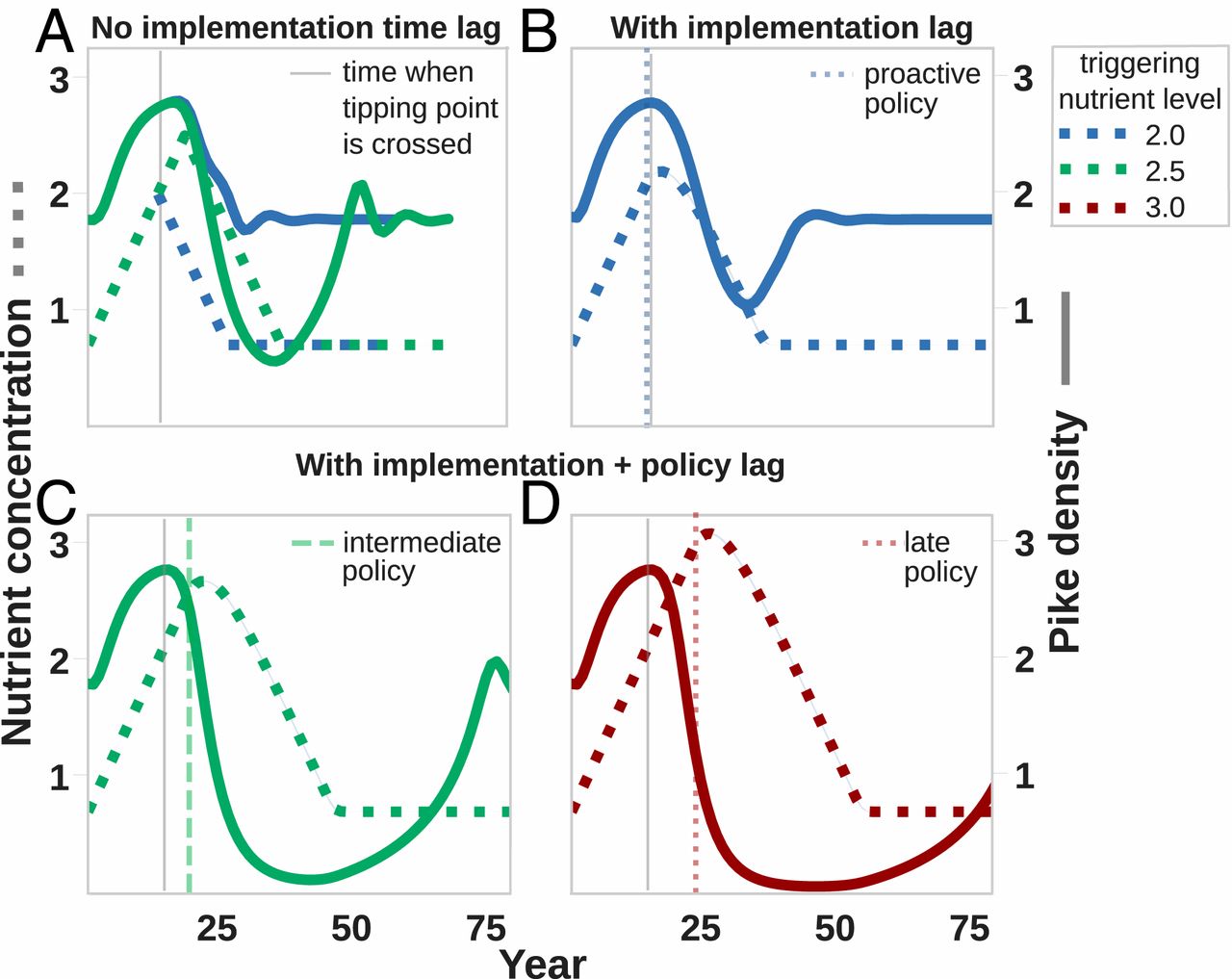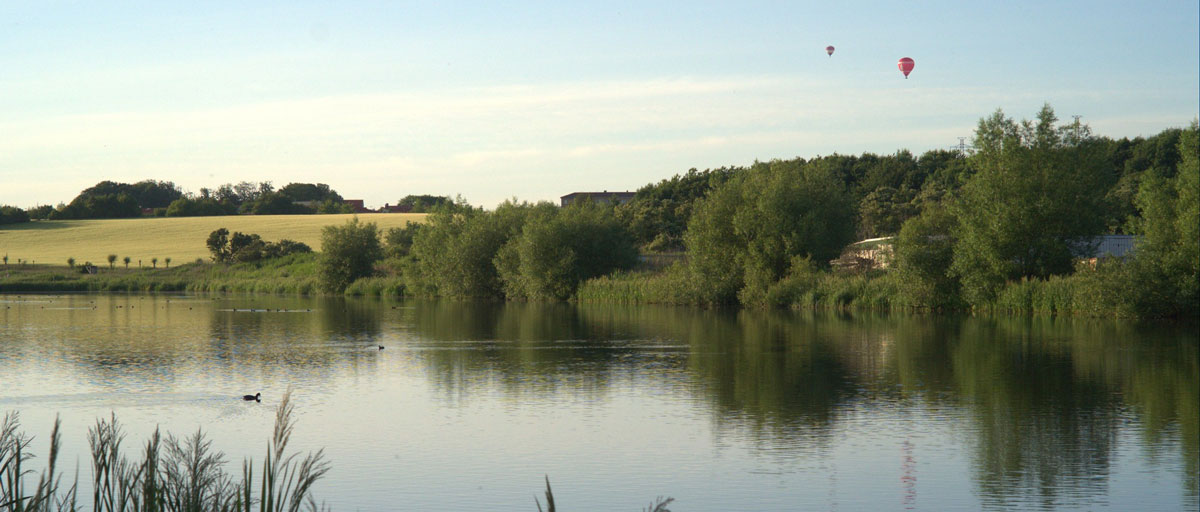Bildtext får vara max två rader text. Hela texten ska högerjusteras om den bara ska innehålla fotobyline! Photo: B. Christensen/Azote
TIME LAGS AND TRANSITIONS
Time is of essence when restoring ecosystems
- Current regime shift models assume action to prevent a shift will take place immediately. They don’t
- The researchers simulate the effects of delayed restoration policies responding to a lake deteriorated by pollution
- Social pressure can accelerate policy implementation and ecosystem restoration
How social interventions become opportunities for accelerated policy implementation
TURNING BACK FROM THE BRINK: Lake eutrophication, bush encroachment and a stock market collapse have several things thing in common: Besides being heavy on the wallet they are difficult to predict and sometimes impossible to reverse.
In a study published in Proceedings of the National Academy of Sciences, centre researchers Romina Martin, Maja Schlüter and Thorsten Blenckner simulate the various effects of delayed responses to a lake deteriorated by pollution. This work is unique because most models evaluate how to prevent regime shifts or they assume action will take place immediately. They don’t.
Martin and her colleagues’ work focus on the ongoing social and ecological processes during what the researchers call transitions, or quick phases of change that can help to bring an ecosystem back into its desired state.
In line with this, Martin and her colleagues show that dealing with a potential regime shift is a rather slippery slope and that delayed policy responses can strongly affect restoration time.
Understanding how social processes affect an ecosystem may be more relevant for management than analyses of ecological stability alone.
Romina Martin, lead author
Dealing with insufficient sewage treatment
In their study, the researchers created a model that simulates different timings of policy implementation with a municipality and 100 house owners who emit nutrients into the lake through insufficient sewage treatment.
The municipality is responsible for managing the lake but whether the inhabitants can continue to enjoy pike angling and swimming depends on how and when the municipality reacts to the nutrient concentration. It would develop a new policy and supports house owners to adopt it.
The simulations provided a range of results, depending on the enforcement strategy taken to react to the damage:
A delay in policy action significantly affects restoration time. For instance, immediate policy implementation will lead to an easy and swift restoration of the lake. The longer the delay, the longer takes a restoration. For instance, by measuring nutrient concentrations in the lake, an intermediate strategy taking effect five years after the tipping point was crossed would result in a restoration time close to 40 years. This can be explained by ecological feedbacks gaining strength which accelerate the transition towards a turbid lake.
Social pressure can facilitate early policy implementation. Some individuals may be quicker to apply new rules and policies (such as doing upgrades to their households to reduce nutrients in sewage water) and inspire their neighbors, but in a high-cost-low-benefit situation, central enforcement by the municipality, despite kicking in later, will ensure a faster overall achievement of the full implementation.
The shorter the policy lag, the quicker the ecosystem returns to its desired state. But, faster implementation can compensate for a late policy response.
These insights, the researchers conclude, demonstrates the importance of considering time lags and transient dynamics to models designed to understand abrupt transitions in an ecosystem.

Time series of lake nutrients concentration (dashed lines) and corresponding pike density (solid). Simulations with (A) no implementation lag (i.e., nutrient concentration is linearly decreased at two different nutrient triggering levels), (B) with implementation lag and a proactive policy (no policy lag), (C) with implementation and an intermediate policy lag, and (D) with implementation and a strong policy lag (i.e., a late restoration). The start of policy is marked by vertical dashed lines, and colors indicate the triggering nutrient level. House owners are parameterized with an intermediate willingness-to-upgrade (0.2) and no enforcement. Click on illustration to access scientific study.
Methodology
The researchers used the social-ecological model LimnoSES for their simulation which combines a classical regime shift model with an agent-based model of human responses. The experiments compare the effect of individual parameters on social responses, ecological responses and evaluate the overall restoration time. The researchers deployed the model to systematically analyse how social time lags influence continuously non-linear ecological dynamics, and thereby affect total lake restoration time.
Martin, R., Schlüter, M., Blenckner, T. 2020. The importance of transient social dynamics for restoring ecosystems beyond ecological tipping points. Proceedings of the National Academy of Sciences of the United States of America. DOI: 10.1073/pnas.1817154117

Romina Martin simulates social-ecological interactions in order to support improvements in regional freshwater management.











